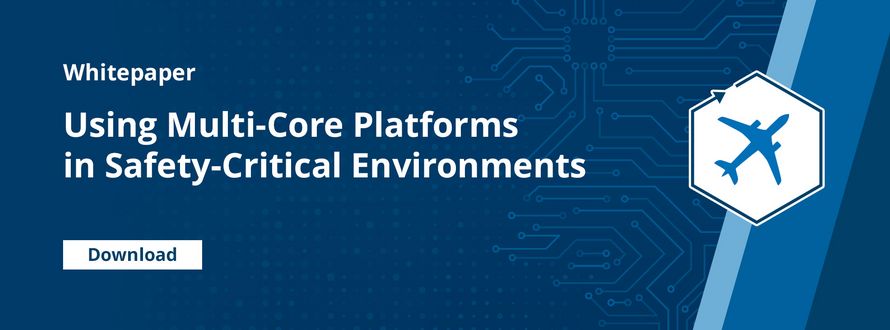In our whitepaper we explore the challenges and potential issues related to utilizing multi-core processors in Safety-critical applications. While multi-core processors offer advantages in performance, power consumption, and size compared to discrete multi-processor designs, they also introduce interference between processing cores due to shared resources. To address these concerns, various initiatives and standards have emerged in the Avionics industry.
The European Union Aviation Safety Agency (EASA) initiated a research project to investigate the use of multi-core processors in airborne systems. The results of this study are detailed in the document "MULCORES – Use of MULti core proCessORs in airborne Systems." The MCFA (Multi-Core for Avionicss) initiative brings together certification authorities and industry experts to discuss certification approaches and access to essential design documentation for multi-core CPUs.
The ARINC 653 standard has been updated to include specifications for using multiple cores within a partition. Additionally, the Certification Authorities Software Team (CAST) has published the position paper CAST-32A, identifying topics that may impact Safety when using multi-core platforms and outlining objectives to address these concerns.
However, meeting the requirements of a CAST-32A compliant environment poses challenges for existing operating systems. The PikeOS operating system stands out as a certified solution for Security and Safety, addressing the demands outlined in the CAST-32A paper and supporting the latest standards for avionics systems, with or without multi-core processors. Get to know more about potential issues and gain insights into utilizing multi-core processors effectively in Safety-critical applications.
Download the Whitepaper

